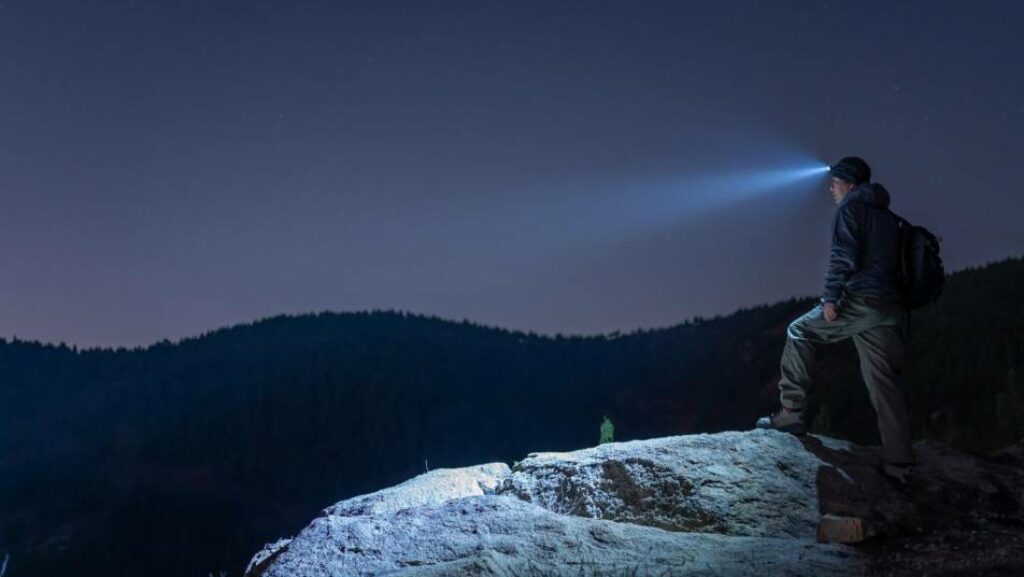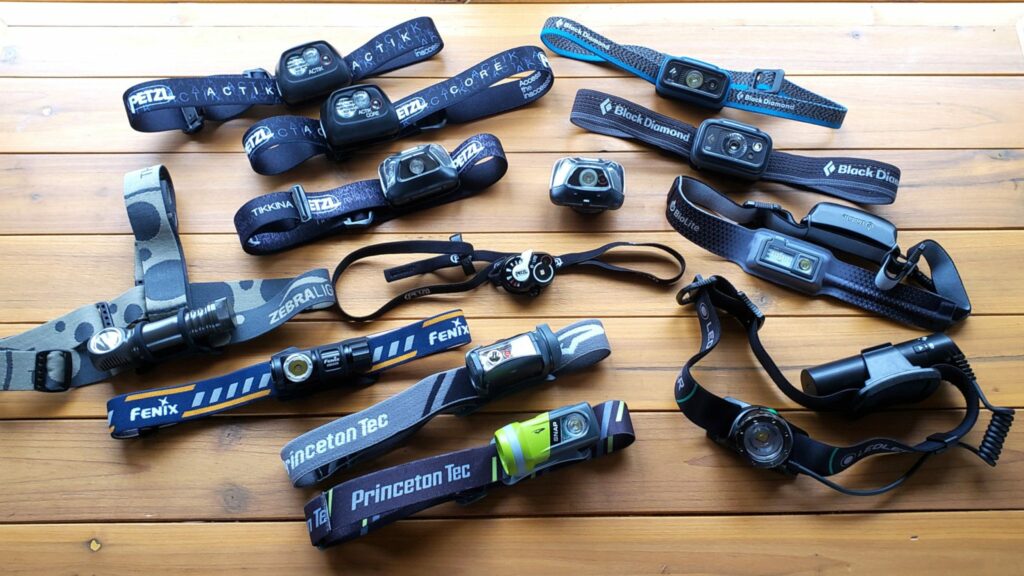When the sun sets and adventure calls, a reliable headlamp can make all the difference. Whether you’re hiking through a quiet forest trail, setting up camp after dark, or navigating rugged terrain, having the right lighting is essential. Unlike flashlights, headlamps keep your hands free, making them a must-have for outdoor enthusiasts.
But with so many options available, how do you choose the best headlamp for hiking and camping? This guide will break down the key features you should look for, from brightness and battery life to comfort and durability. We’ll also answer common questions like how many lumens you need for hiking at night and what makes a headlamp great for the outdoors.
By the end of this article, you’ll have a clear understanding of how to choose the best headlamp for your next adventure. Plus, we’ll cover maintenance and safety tips to keep your gear in top shape. Whether you are a casual camper or a serious night hiker, this guide will ensure you find the perfect headlamp.
Key Features to Consider When Choosing a Headlamp
Brightness: How Many Lumens Do You Need for Hiking?
Brightness is measured in lumens, which indicate how much light a headlamp emits. Choosing the right lumen count depends on your activity:
- 30-100 lumens: Ideal for reading in a tent, performing small campsite tasks, and conserving battery life.
- 100-200 lumens: Suitable for general hiking on easy trails with minimal obstacles.
- 200-400 lumens: Recommended for night hiking on moderate trails with uneven terrain.
- 400-600 lumens: Best for technical trails, rough terrain, or foggy conditions.
- 600+ lumens: Required for trail running, mountaineering, or extreme weather conditions where maximum visibility is crucial.
For most hikers, a headlamp in the 200-400 lumen range is ideal. Anything brighter provides better visibility but drains the battery faster. Look for a headlamp with adjustable brightness so you can switch between settings as needed.

Beam Type and Adjustability
The type of beam a headlamp produces affects how well you can see in different environments. There are three main beam types:
- Spot Beam: Provides a focused, long-distance beam that is useful for navigating trails in the dark.
- Flood Beam: Spreads light over a wide area, making it useful for setting up camp or cooking.
- Hybrid Beam: Combines spot and flood beams, offering the best of both worlds.
A headlamp with a tilting mechanism allows you to adjust the beam angle, making it more versatile for different activities.
Battery Life and Power Options
Battery life is one of the most important considerations when selecting a headlamp. The last thing you want is for your light source to die in the middle of a night hike. There are three main power options:
- Rechargeable Batteries: These are eco-friendly, cost-effective, and reduce waste but require access to a power source.
- Disposable Batteries (AA or AAA): These are convenient but can become expensive and are less sustainable.
- Hybrid Power (Rechargeable and Disposable Compatibility): This option provides the most versatility and ensures you always have power.
For long-distance hikes, choose a headlamp with at least 10-20 hours of runtime on a medium setting. Some advanced models include power-saving modes that automatically adjust brightness to extend battery life. If you expect to be out for several days, consider carrying a portable solar charger or extra battery packs.
Comfort and Fit
Since you will be wearing your headlamp for extended periods, comfort is key. Look for:
- Adjustable headbands to ensure a secure yet comfortable fit.
- Lightweight design, ideally under four ounces, to avoid strain on your head.
- Rear battery packs that help balance weight distribution for better comfort.
- Padded straps to prevent pressure points on your forehead.
A poorly fitting headlamp can lead to discomfort over long distances, so testing the fit before purchasing is always a good idea.
Weather Resistance and Durability
Outdoor conditions can be unpredictable, so your headlamp needs to withstand rain, mud, and rough handling. Look for a headlamp with an IPX rating, which indicates water resistance:
- IPX4: Splash-resistant and can handle light rain.
- IPX6: Can withstand heavy rain and more intense weather.
- IPX7 or higher: Waterproof and capable of being submerged in water.
If you expect rough terrain, choose a shock-resistant model with reinforced plastic or aluminum casing for added durability.
Extra Features Worth Having
- Red Light Mode: Helps preserve night vision and reduces glare for others around you.
- Motion Sensors: Allows for hands-free control.
- Lock Mode: Prevents accidental activation while in your backpack.
- Strobe Mode: Useful for emergencies and signaling.
- Battery Indicator: Helps track power levels to avoid unexpected shutoffs.
Best Headlamp Picks for Different Activities
Casual Camping and General Use
For campsite activities, a 100-200 lumen headlamp with a flood beam is sufficient. Features like a red light mode can be useful for nighttime reading or moving around camp without disturbing others.
Night Hiking and Trail Running
For night hiking, a 300-500 lumen headlamp with a hybrid beam is ideal. Trail runners should opt for a lightweight, secure-fit headlamp to prevent bouncing.
Backpacking and Multi-Day Trips
For multi-day adventures, a 200-400 lumen rechargeable headlamp with hybrid power backup is the best choice. Water resistance and long battery life are important for extended trips.
Survival and Emergency Situations
For emergencies, opt for a headlamp with at least 400 lumens, long battery life, and extra durability. Emergency features such as an SOS signal and strobe mode can be lifesaving in critical situations.

Equipment Maintenance and Safety Tips
Do’s
- Clean the lens and headband regularly to remove dirt and debris.
- Store batteries separately when not in use to prevent leakage.
- Check battery contacts for dust and moisture to ensure proper function.
- Keep your headlamp in a cool, dry place to extend its lifespan.
- Carry spare batteries or a power bank for extended trips.
Don’ts
- Do not leave your headlamp on the highest setting unless necessary to conserve battery life.
- Do not store your headlamp with dead batteries inside, as they can leak and cause damage.
- Do not submerge your headlamp in water unless it is fully waterproof.
- Do not overtighten the headband, as this can cause discomfort over long periods.
- Do not forget to test your headlamp before heading out to ensure it is working properly.
Frequently Asked Questions
How many lumens do I need for hiking in the dark?
For general night hiking, 200-400 lumens is recommended. If hiking in rugged or foggy conditions, opt for at least 400 lumens.
Are rechargeable headlamps better than battery-powered ones?
Rechargeable headlamps are cost-effective and environmentally friendly, but battery-powered models are better for long trips where charging options are limited.
How can I extend my headlamp’s battery life?
Use lower brightness settings when full power is not needed, enable power-saving mode, and carry spare batteries or a power bank.
Final Thoughts
Selecting the right headlamp ensures a safer and more enjoyable outdoor experience. For most hikers and campers, a 200-400 lumen model with adjustable beams, a comfortable fit, and decent battery life is sufficient. Investing in the right gear enhances visibility, safety, and comfort, making your adventures more enjoyable.
If you have experience with a particular headlamp or thoughts on this article, feel free to share them in the comments below. Your insights can help others make better choices for their outdoor adventures.






